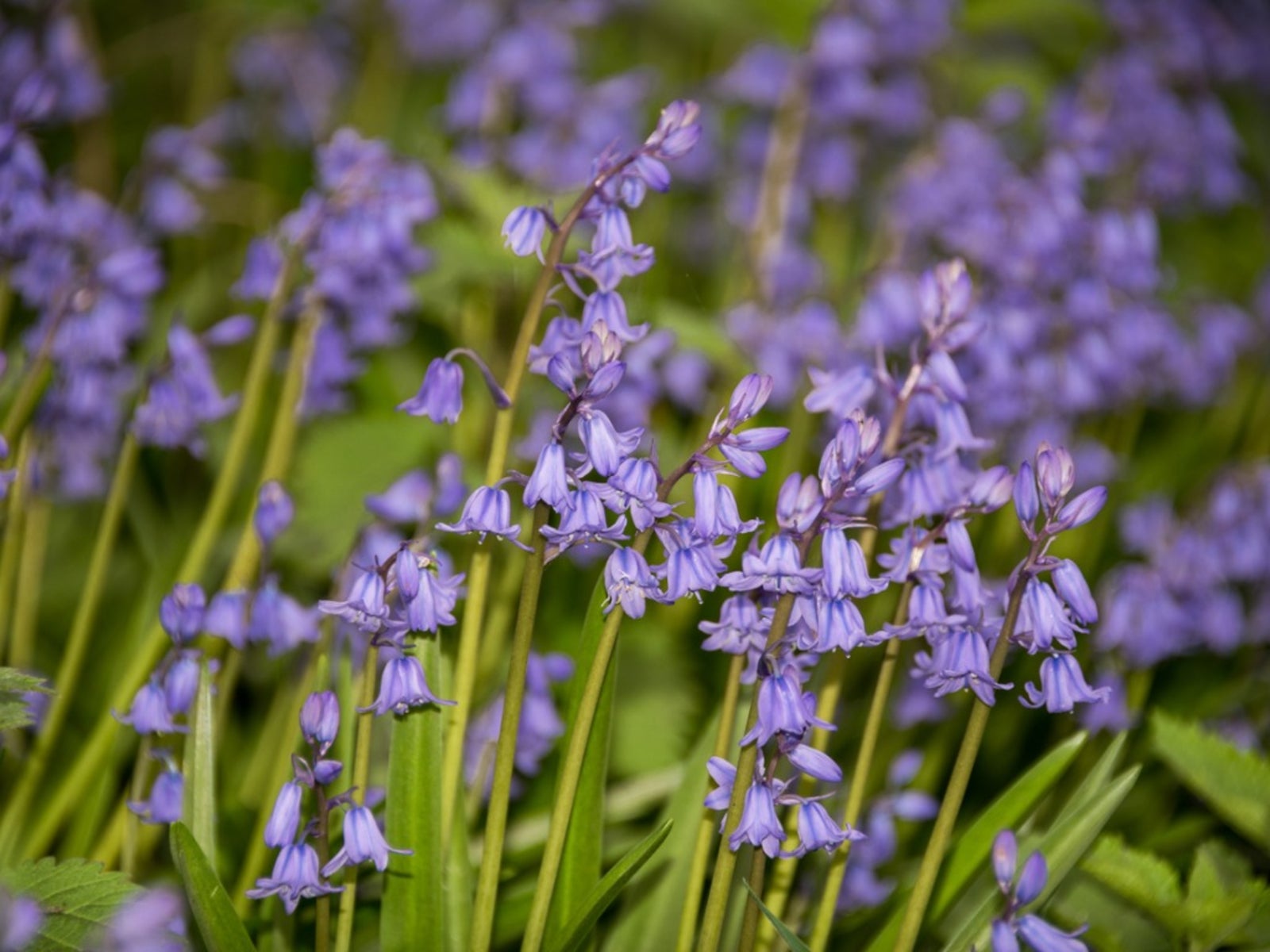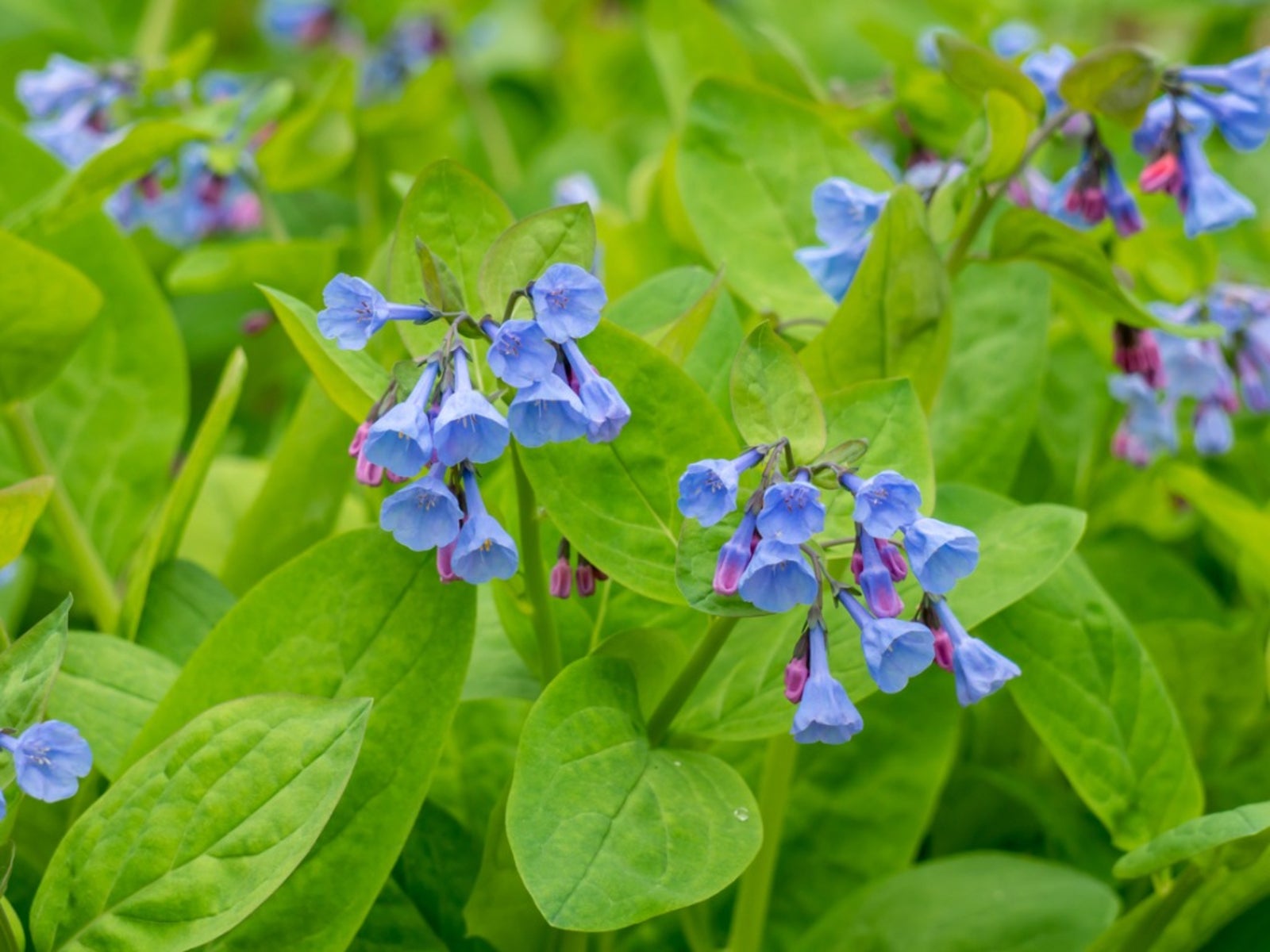Growing Bluebells: Care Of Wood Hyacinth Bluebells

Bluebell flowers are dainty bulbous perennials that provide a profusion of color ranging from deep purple to pinks, whites and blues from April to mid May. Although some confusion may occur from various English and Latin names, most bluebells are also known as wood hyacinths.
English and Spanish Bluebells
English bluebells (Hyacinthoides non-scripta) are native to France and England and have been gracing gardens and wooded areas with their beautiful bluish-purple flowers since the early 1500's. These spring delights reach heights of 12 inches (30 cm.) and can be planted in the fall for spring bloom. The flowers are fragrant and make a wonderful addition to any cut bouquet. An interesting feature of English bluebell is that the flowers are all on the same side of the stalk and, when gravity kicks in, the stalk bends in a dainty curve. Spanish bluebells (Hyacinthoides hispanica) are similar in many ways to English bluebells apart from the fact that they bloom in open areas and are rarely found in woods. Spanish bluebell stalks are straight and do not display the curve as seen in English bluebells. Spanish bluebells do not have as strong a fragrance as English bluebells either and tend to bloom a bit later. Flowers can be blue, pink or white.
Growing Bluebells
The care of wood hyacinth plants requires minimal energy. These easy-to-please bulbs naturalize rapidly and prefer well-drained soil with a high organic content. Like Virginia bluebells, wood hyacinths will thrive in shade or part-sun in the South and will tolerate full sun in northerly climates. Unlike some plants, bluebells will quickly multiply under the shade of large trees. Both English and Spanish Bluebells make excellent transition bulbs between early-spring bloomers and early summer perennials. Bluebells are excellent companions to hostas, ferns and other woodland native plants.
Planting Bluebell Flowers
Plant bluebell bulbs after the heat of summer has passed or in early fall. Several bulbs can be placed in the same 2-inch (5 cm.) deep hole. Water the bulbs frequently over the fall and winter for best performance. Divide during the summer months, once the plant has gone dormant. Bluebells grow best when they are left to naturalize in shade gardens or woodland settings.
Gardening tips, videos, info and more delivered right to your inbox!
Sign up for the Gardening Know How newsletter today and receive a free copy of our e-book "How to Grow Delicious Tomatoes".
-
 Looking For Plants To Give You The Soft And Fuzzies? Try These 5 Fuzzy Leaf Plant Options
Looking For Plants To Give You The Soft And Fuzzies? Try These 5 Fuzzy Leaf Plant OptionsLovers of texture, drama, silver foliage and tactile plants will adore these special sensory garden additions. These fuzzy leaf plant options will leave you all aglow
By Susan Albert
-
 Get Ready For A Summer Of Hummers! Grow These Full Sun Hummingbird Plants and Flowers
Get Ready For A Summer Of Hummers! Grow These Full Sun Hummingbird Plants and FlowersIf you’re lucky enough to enjoy a sunny backyard, make sure you are maxing out on your pollinator opportunities and grow these full sun hummingbird plants and flowers
By Tonya Barnett
-
 How To Kill Bluebell Bulbs: Information To Get Rid Of Bluebells
How To Kill Bluebell Bulbs: Information To Get Rid Of BluebellsEnglish and Spanish bluebells may seem like the novice gardener's dream: a beautiful flower, easy to grow and willing to spread. Unfortunately, they can take over the area. Find out how to control them here.
By Anne Baley
-
 Growing Virginia Bluebells – What Are Virginia Bluebell Flowers
Growing Virginia Bluebells – What Are Virginia Bluebell FlowersGrowing Virginia bluebells in their native range is a great way to add pretty spring and early summer color. These gorgeous wildflowers thrive in partially shady woodlands and can be used to naturalize gardens, in beds, wooded areas, and borders. Learn more in this article.
By Mary Ellen Ellis